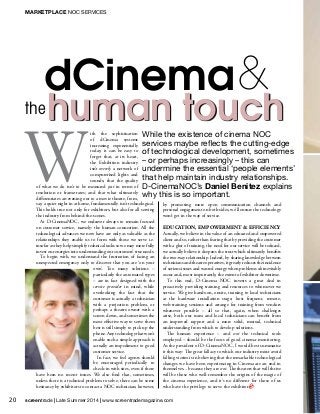Signaler
Partager
Télécharger pour lire hors ligne

Recommandé
Recommandé
Contenu connexe
En vedette
En vedette (20)
Product Design Trends in 2024 | Teenage Engineerings

Product Design Trends in 2024 | Teenage Engineerings
How Race, Age and Gender Shape Attitudes Towards Mental Health

How Race, Age and Gender Shape Attitudes Towards Mental Health
AI Trends in Creative Operations 2024 by Artwork Flow.pdf

AI Trends in Creative Operations 2024 by Artwork Flow.pdf
Content Methodology: A Best Practices Report (Webinar)

Content Methodology: A Best Practices Report (Webinar)
How to Prepare For a Successful Job Search for 2024

How to Prepare For a Successful Job Search for 2024
Social Media Marketing Trends 2024 // The Global Indie Insights

Social Media Marketing Trends 2024 // The Global Indie Insights
Trends In Paid Search: Navigating The Digital Landscape In 2024

Trends In Paid Search: Navigating The Digital Landscape In 2024
5 Public speaking tips from TED - Visualized summary

5 Public speaking tips from TED - Visualized summary
Google's Just Not That Into You: Understanding Core Updates & Search Intent

Google's Just Not That Into You: Understanding Core Updates & Search Intent
The six step guide to practical project management

The six step guide to practical project management
Beginners Guide to TikTok for Search - Rachel Pearson - We are Tilt __ Bright...

Beginners Guide to TikTok for Search - Rachel Pearson - We are Tilt __ Bright...
Screentrade Late Summer 2014 Spreads P20_21
- 1. 20 screentrade | Late Summer 2014 | www.screentrademagazine.com Marketplace NOC SERVICES ith the sophistication of dCinema systems increasing exponentially today, it can be easy to forget that, at its heart, the Exhibition industry isn’t merely a network of computerised lights and sounds; that the quality of what we do isn’t to be measured just in terms of resolution or frame-rates; and that what ultimately differentiates an evening out to a movie theatre, from, say, a quiet night in at home, fundamentally isn’t technological. This holds true not only for exhibitors, but also for all serving the industry from behind-the-scenes. At D-CinemaNOC, we endeavor always to remain focused on customer service, namely: the human connection. All the technological advances we now have are only as valuable as the relationships they enable us to form with those we serve i.e. insofar as they help simplify technical tasks so we may more fully invest our energies into understanding our customers’ true needs. To begin with, we understand the frustration of facing an unexpected emergency only to discover that you are ‘on your own’. Too many solutions – particularly the automated types – are in fact designed with the service provider in mind, while overlooking the fact that the customer is actually a technician with a projection problem, or perhaps a theatre owner with a screen down, and sometimes the most effective way to serve them best is still simply to pick up the phone.Anytechnologythatwon’t enable such a simple approach is actually an impediment to good customer service. In fact, we feel agents should be encouraged periodically to check-in with sites, even if there have been no recent issues. We also find that, sometimes, unless there is a technical problem to solve, there can be some hesitancy by exhibitors to contact a NOC technician; however, dCinema While the existence of cinema NOC services maybe reflects the cutting-edge of technological development, sometimes – or perhaps increasingly – this can undermine the essential ‘people elements’ that help maintain industry relationships. D-CinemaNOC’s Daniel Benitez explains why this is so important. W by promoting more open communication channels and personal engagement on both sides, we’ll ensure the technology won’t get in the way of service. EDUCATION, EMPOWERMENT & EFFICIENCY Actually, we believe in the value of an educated and empowered client and so, rather than fearing that by providing the customer with a glut of training, the need for our service will be reduced, we actually believe it deepens the trust which ultimately benefits the two-way relationship. Indeed, by sharing knowledge between technicians and theatre operatives, it greatly reduces the incidence of serious issues and wasted energy when problems do inevitably occur and, most importantly, the extent of exhibitor downtime. To this end, D-Cinema NOC invests a great deal in proactively providing training and resources to whomever we service. We give hands-on, onsite, training to local technicians at the hardware installation stage; host frequent, remote, web-training sessions and arrange for training from vendors whenever possible – all so that, again, when challenges arise, both our team and local technicians can benefit from an improved rapport and a more solid, mutual, technical understanding from which to develop solutions. The human experience – and not the technical tools employed – should be the focus of good cinema-monitoring. As the president of D-CinemaNOC, I would best summarise it this way: The great fallacy to which our industry must avoid falling victim is in believing that the remarkable technological changes we have been experiencing in Cinema are an end in themselves... because they are not. The theaters that will thrive will be those who well-remember the origins of the magic of the cinema experience, and it’s no different for those of us who have the privilege to serve the exhibitor.S human touch & the